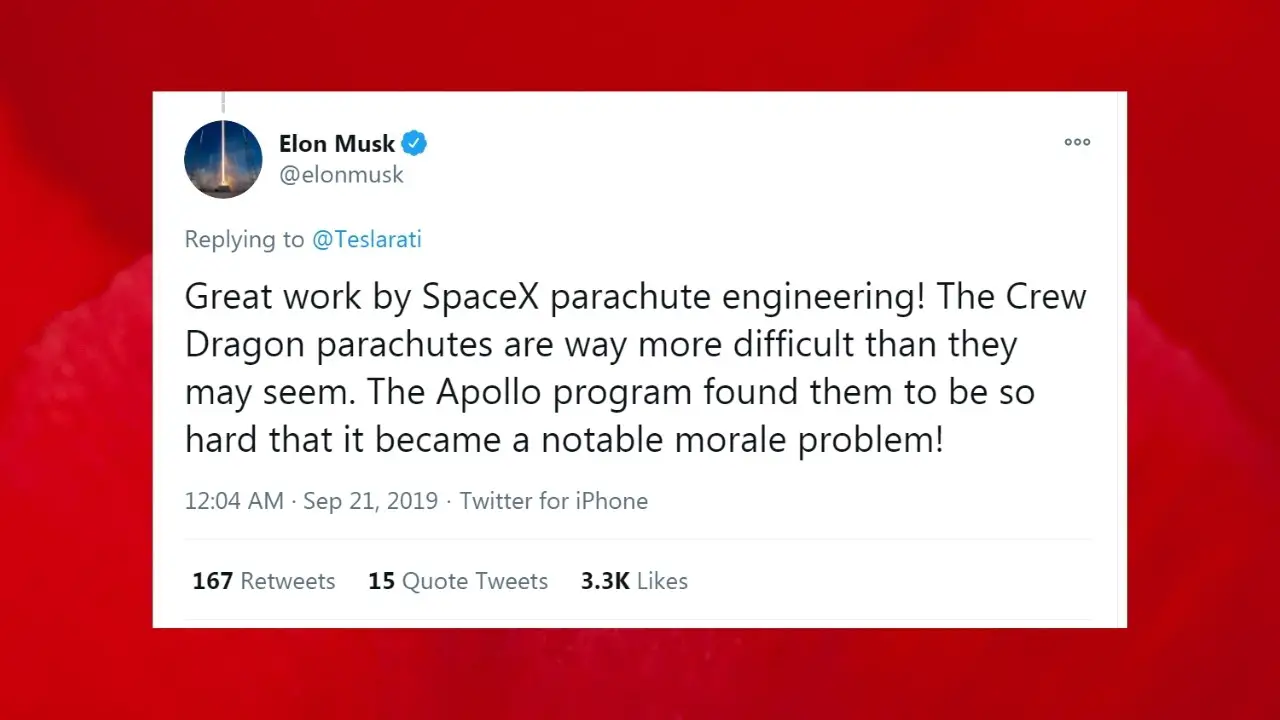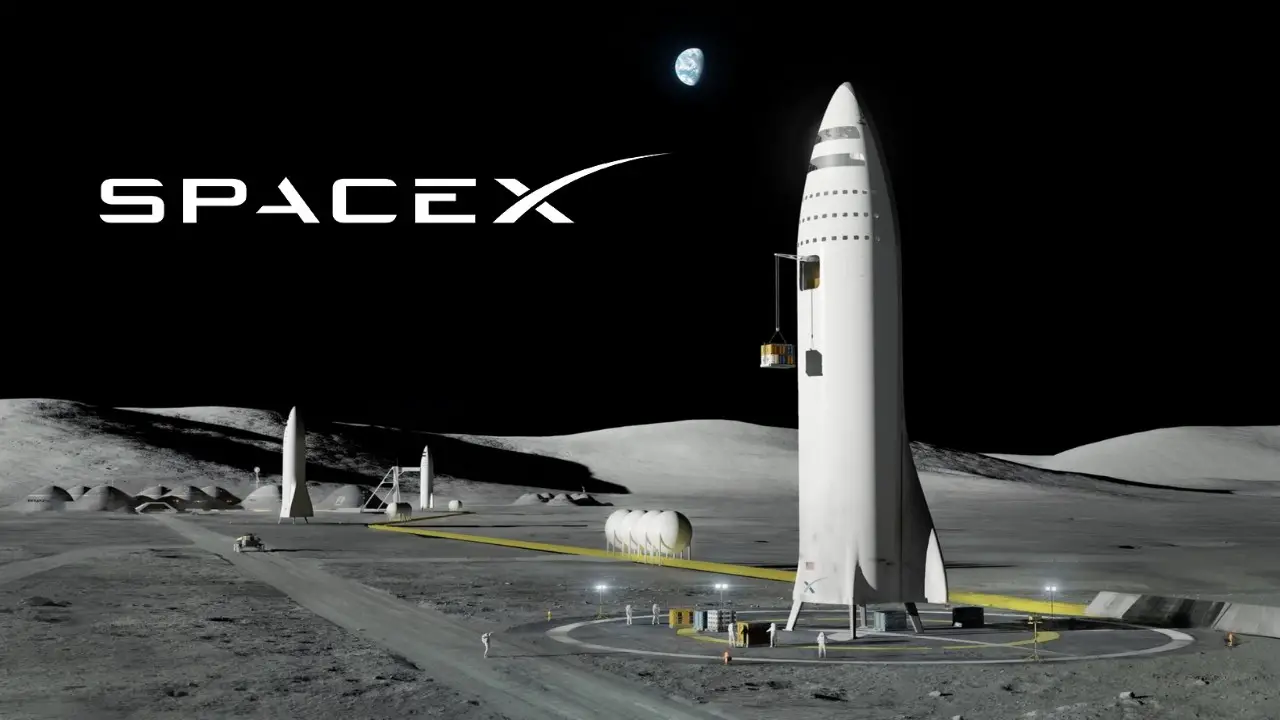We know that SpaceX’s Crew Dragon and Rocket lab’s first stage uses parachutes to land on Earth.
So, why doesn’t SpaceX use parachutes to land their Falcon 9, Starship, or Super Heavy?
SpaceX doesn’t use parachutes to land their rockets because it lacks precision landing control, weights more than required fuel to land, impractical due to rocket weights, will not work on Moon and asteroids, and ineffective for Mars thin atmosphere.
Let’s elaborate.
Crew Dragon does not need a parachute:
Many people don’t know that SpaceX’s Crew Dragon does not need a parachute to land on Earth.[1]
Initially, SpaceX designed the Crew Dragon to land propulsively and used the parachute as a backup landing mechanism. However, as per NASA’s requirement, SpaceX uses the parachute as the primary landing method and still has the redundant propulsive landing capability. For example, in case of an accident, parachutes fail to deploy, the Crew Dragon will use their thrusters to land on Earth.
Therefore, Crew Dragon uses parachutes to land because NASA asks it to do it. There are no other reasons.
Falcon 9 tried to use parachute:
SpaceX tried to use parachutes on their first two Falcon 9 rockets. However, those rockets disintegrated upon Earth’s atmospheric re-entry. They soon realized that they needed to slow down their rocket during re-entry; otherwise, Falcon 9 would not survive.
Therefore, they redesigned the Merlin engine with multiple reignition capabilities.
There are two burns that are mandatory for SpaceX rocket survival. One is the boost back burn, and another one is the re-entry burn — both of these need fuel. Carrying extra fuel and parachute is redundant and complex for a large rocket that weighs more than 25 tons.
Parachutes weights more than fuel:
After the first two Falcon 9 re-entry failures, SpaceX realized they would save on rocket weight if they use a propulsive landing mechanism instead of parachutes. Here’s a rough calculation.[2]
Each pound (1 lb) of parachute canopy can carry 5.25 pounds of suspended loads.
The Falcon 9’s first stage’s dry mass weight is around 49,000 lb (24.5 tons).[3] Therefore, if SpaceX wants to land their rocket with a parachute, the parachute’s weight would be 49,000 / 5.25 = 9,333 lbs = 4.5 tons.
However, the descending Falcon 9 stage has a terminal velocity of about 0.2 km/sec (447 mph). The exhaust speed of the Marlin engine configured for first stage operation is 2.765 km/sec. So, the weight of fuel to slow down the Falcon 9 first stage from 447 mph is 24.5 x (exp(0.2/2.765)-1) = 1.84 tons.
Therefore, if Falcon 9 lands propulsively, it only needs to carry 1.84 tonnes of fuels. However, if SpaceX wants to land Falcon 9 using a parachute, the parachute’s weight would be 4.5 tons. Furthermore, due to the first stage’s extra weight, the rocket’s payload capacity would also reduce. Hence, a propulsive landing is more practical.
Precision landing with a parachute is hard:
For a long time, SpaceX has been trying to land its rocket fairings on drone ships with parachutes. But the process is hit or miss. On a few occasions, SpaceX successfully landed fairings with a parachute; other times, it landed on the ocean, missing the drone ship. It’s because precision landing with a parachute is challenging, primarily due to wind.
Moreover, the descent speed with a parachute is not low enough to land Falcon 9 undamaged. On various Falcon 9 landing, we have seen that a little bit extra landing velocity can destroy the first stage booster. Now, imagine the damage profile of Falcon 9 due to parachute landing.
Saltwater is corrosive:
On various rocket missions, SpaceX needs to land their booster in the ocean on a drone ship. We all know water damages electronics. Without a propulsive landing mechanism, precision landing on a drone ship is tough.
Saltwater is corrosive[4]. If it lands in the ocean, the saltwater will damage the rocket engine and valuable electronics. It will make the SpaceX rocket unusable.
Parachute design is tough:
During the Apollo missions, the biggest challenge for NASA was to design a reliable parachute. SpaceX also faced numerous challenges during the design phase of the Crew Dragon parachute.

According to Elon Musk, “The Crew Dragon parachutes are way more difficult than they may seem. The Apollo program found them to be so hard that it became a notable morale problem!”[5]
Moon has no atmosphere:
SpaceX will not send their crew dragon to the Moon. They made the crew dragon specifically for carrying astronauts to and from International Space Stations (ISS).
However, SpaceX would use the Starship for Moon and Mars missions. As the Moon has no atmosphere,[6] parachute landing is not possible. Therefore, the Starship must land on the Moon propulsively.
Mars has a thin atmosphere:
Mars’s atmosphere is so thin that the Starship parachute landing is not practical. According to NASA, a 1-ton vehicle can land on Mars using a parachute. Even NASA struggles to find a solution to land a Mars vehicle with a parachute that weighs 2 to 3 tons.
The dry mass of Starship is 132 tons.[7] On top of this, Starship can carry more than 100 tons of payload, excluding fuel wights. As we have seen, NASA is struggling to design a vehicle that can land on Mars with a parachute that weighs only 2 to 3 tons. Therefore, it is impossible to land the Starship on Mars with a parachute that weighs more than 200 tons with the payload.
Interesting Findings:
Why does SpaceX hire only Americans?
Elon Musk has several successful companies. SpaceX and Tesla are the most well known among them. All of his companies employ hundreds of thousands of people, including foreign nationals. For example, in Tesla US alone, more than 25% of engineers and workers are foreign nationals.
However, there’s one exception. SpaceX does not hire non-US citizens. So why does SpaceX hire only Americans? To learn more, click here.

Elon Musk SpaceX Ownership:
SpaceX is a privately held company, and Elon Musk is the principal shareholder of SpaceX. During a recent FCC filing, SpaceX revealed that Elon Musk owns 54% of the company with 78% voting control in the SpaceX board[8]. Moreover, Elon Musk is the only person who owns more than 10% share of this company.
Why are SpaceX rockets cheaper?
A United Launch Alliance rocket costs around $400 million per launch, whereas a SpaceX Falcon 9 rocket costs only $60 million and the SpaceX Falcon Heavy rocket costs $90 million. So, why are SpaceX rockets cheaper? To learn more, click here.
Bottom Line:
In conclusion, the future has to be precision propulsive landing because that’s what we need to go to the Moon, Mars, asteroids, or anywhere else in the Solar system. Parachute rocket landing is not only impractical but also unreliable.
